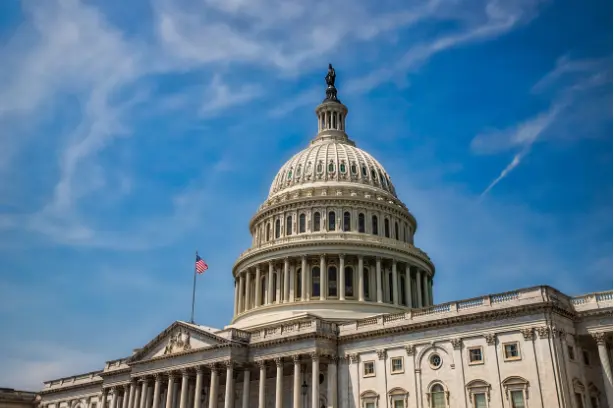By Preserve Gold Research
Just days before the Treasury Department was expected to run out of money, Congress and the White House reached a last-minute deal that would allow the government to stave off a potential default. The deal, which suspends the nation’s borrowing limit until January 2025, puts caps on non-emergency discretionary spending and is expected to reduce the federal deficit by more than $1.3 trillion over 10 years.
But while the debt ceiling deal has been celebrated as a major victory by both political parties, it has come with a steep price tag. On the first working day after the deal was struck, U.S. national debt shot up by an astonishing $359 billion—the largest single-day on-book increase in history.
The surge in debt comes at a time when the U.S. economy is already facing a number of challenges, including anemic economic growth and rising interest rates that have pushed up borrowing costs to their highest level since 2007. While the debt ceiling deal has helped avert a catastrophic default by raising the statutory limit, it has also exposed the U.S. government’s unsustainable fiscal trajectory and does little to address the underlying causes of the fiscal imbalances.
With the spending floodgates open and mounting debt that’s becoming increasingly expensive to finance, some economists fear that the country could soon be at risk of a fiscal crisis as it struggles to pay its debts and service its obligations.
A Small Drop in the Ocean of U.S. Debt
While the proposed reductions in spending outlined in the debt ceiling deal will bring modest relief to the federal budget, they are overshadowed by the immense scale of federal spending. This year alone, federal spending is projected to reach approximately $6.2 trillion, and over the next decade, it is expected to surpass $80 trillion according to the Congressional Budget Office.
In comparison, the proposed spending reductions that accompany the debt ceiling deal total only a small fraction of this—$1.3 trillion over 10 years, or about 0.2% of the total federal spending over that period of time. This highlights the stark reality that reducing government spending in a meaningful way is exceedingly difficult, and will require a much broader effort to put the nation’s finances on a sustainable path.
Looking at the somber state of affairs from another perspective, this year’s spending is estimated to account for about 24.4% of the GDP, considerably higher than the average of 20.5% over the past 50 years. To bring spending back in line with historical averages, the government would need to cut an additional $1.25 trillion in spending each year for the next 10 years—a Herculean task that could have serious consequences for the economy if it is carried out too quickly.
The debt ceiling deal may have provided a short-term reprieve from a potential default, but it has done little to tackle the deeper issues that are weighing down the U.S. economy—namely, the unsustainable and ever-growing levels of the national debt.
The passage of the Fiscal Responsibility Act of 2023 has effectively given Congress a blank check to continue borrowing and spending unchecked, with little incentive to make meaningful reforms or to address the underlying fiscal imbalances. While the legislation does contain measures to claw back some Covid-19 relief funds and spending, it is a drop in the ocean compared to the $31.9 trillion of federal debt owed by the United States.
It is the government’s excessive fondness for spending that has led to the current state of affairs, and until that changes, analysts fear the U.S. will remain on an unsustainable fiscal path that could eventually lead to a crisis of confidence. And unlike past debt ceiling deals like the one struck in August 2011, this latest deal completely removes the debt ceiling, allowing the federal government to borrow and spend without limit.
Mandatory Spending – The Real Fiscal Problem
The debate over the debt ceiling has primarily focused on discretionary spending—the funds that Congress sets aside for specific programs and projects like defense, education, and infrastructure. However, this type of spending only accounts for roughly one-third of the nation’s total budget. The other two-thirds comes from mandatory spending—the funds that are automatically appropriated each year for entitlements like Social Security and Medicare—and interest payments on the debt.
Unlike discretionary spending, which is controlled by Congress through the appropriations process, mandatory spending is not subject to annual review or approval. Since 1970, spending for mandatory funded programs has grown from 31% of the budget to more than 60%. Over that same period, spending for discretionary programs—the areas most affected by the debt ceiling limit—has decreased from roughly 66% to about 28%.
With America’s aging population and rising healthcare costs, mandatory spending is expected to outpace all other forms of federal spending over the next decade, along with interest payments. According to current projections, mandatory spending is expected to increase from 14% of GDP in 2026 to 15.6% by 2033. In contrast, discretionary spending is set to decrease from 6.8% in 2025 to 6.0% over the same period. Furthermore, interest payments on the debt are projected to rise from 2.7% of GDP next year to 3.7% by 2033. These trends make it increasingly difficult for policymakers to bring spending back in line with historical norms without making drastic cuts to entitlement programs and other areas of mandatory spending.
The dramatic shift in spending priorities has put the nation on an unsustainable fiscal path with the long-term solvency of the federal budget at stake. According to economists from the University of Pennsylvania, achieving fiscal balance in the long term will likely require a combination of tax increases, entitlement reform, and spending cuts—all of which are highly unpopular with both parties and therefore politically challenging to implement.
The U.S. cannot simply borrow and spend its way out of debt and deficit problems, as the debt ceiling deal illustrates. With lawmakers on both sides of the aisle unwilling to tackle the tough issue of reforming mandatory spending, the proverbial debt can is likely to get kicked down the road, leaving America’s economic future highly uncertain.
Implications of US Treasury’s Bond Sale and Its Impact on Interest Rates and Market Liquidity
The debt ceiling deal may have provided temporary respite from an impending default, but many economists agree that the country’s fiscal woes are far from solved. According to estimates from Goldman Sachs, the Treasury Department will need to issue an additional $700 billion in Treasury bills within six to eight weeks to replenish cash reserves that were depleted during the government’s borrowing limit period. Estimates point to an even higher figure of $1 trillion in Treasury bill issuance by the end of 2023.
Analysts say that the deluge of new debt could lead to higher interest rates and lower market liquidity, both of which could have significant implications for the U.S. economy. As the Treasury Department attempts to finance its debt, it will have to compete with private-sector borrowers. To do so, it will have to offer higher yields than they are currently offering in order to draw investors away from the private sector.
For banks already struggling with thinning profit margins, being forced to compete with the Treasury Department for investors could make it even harder to stay afloat. With the influx of government borrowing expected to deplete the available reserves held by banks, analysts fear it could trigger a liquidity crunch, resulting in higher borrowing costs for businesses and consumers. The current systemic risks within the banking sector, combined with higher interest rates and lower market liquidity, could force banks to make further cuts in lending, potentially leading to a credit crunch and an economic downturn say some analysts.
Bank of America analysts project that the increased borrowing by the U.S. government could have an impact equivalent to a 25 basis point rate hike – effectively raising the federal funds rate above the level that triggered the 2008 financial crisis. With the U.S. economy already given a 99% chance of entering a recession within the next 10 months, any further rate hikes could accelerate the onset of an economic contraction and perhaps even a full-blown financial crisis.
The Importance of Diversification
The debt ceiling deal may have bought the U.S. some time to address its fiscal problems, but economists caution that without a serious and sustained effort to reform mandatory spending, America could be heading down a dangerous fiscal path that could eventually lead to a crisis of confidence.
During times of economic uncertainty, advisors emphasize the importance of having diversified savings spread across multiple asset classes and of staying informed on changes in the fiscal landscape that could affect one’s financial planning. With so many unknowns ahead, an increasing number of Americans are turning to precious metals to help protect their assets from market volatility and to help preserve their purchasing power.
Faced with rising debt levels, an aging population, and an economy near the brink of recession, the U.S. government is running out of options to address its long-term fiscal woes. The effects of the recent debt ceiling deal could be felt for years to come, and the ramifications of an eventual default could be catastrophic, according to analysts. In light of this, experts advise investors to prepare for the unpredictable and diversify their assets accordingly. With gold and silver offering a hedge against market volatility and potential inflation, now may be an opportune time for Americans to consider precious metals.







